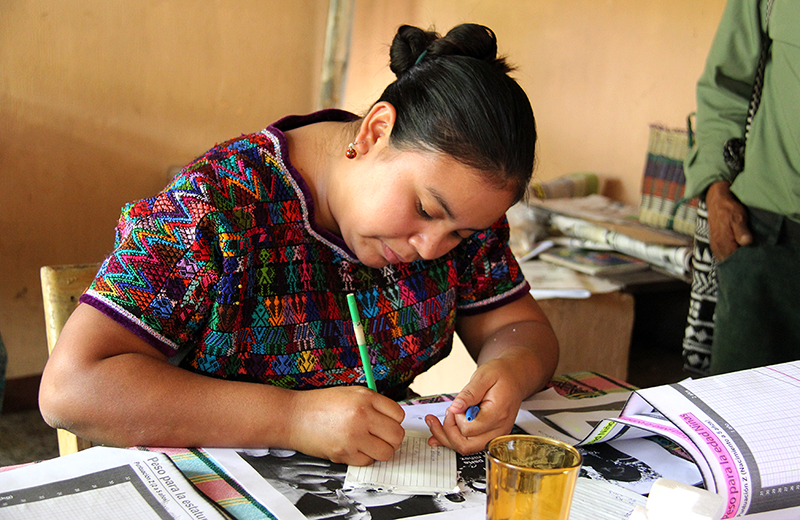Nutrition is a serious issue in Guatemala, where almost 50% of young children suffer from chronic malnutrition.
Chronic malnutrition in very young children can lead to many lifelong problems, including:
-Heart disease and kidney damage
-Lower physical capacity and energy
-Poor brain and nerve development and function
-Diabetes and obesity caused by lack of activity and nutrient-poor, sugar-rich diets
Over the past 12 years, our work with Qachuu Aloom has increased agricultural production and brought back native crops, improved economic opportunity, and created educational opportunities—particularly for young girls. Recently, we have been making more of an effort to address health and nutrition.
Last spring, José Miguel, an active member of Qachuu Aloom, initiated a nutrition pilot program to study and address malnutrition in four villages. He also wanted to train young people to conduct assessments and distribute treatments in order to give them skills to help them excel in adulthood. José Miguel recruited 11 young people through Qachuu Aloom, including several Garden’s Edge scholarship recipients. He trained them to measure and weigh young children and to chart their data to identify trends and changes.
From April to August of last year, José Miguel and his students conducted monthly assessments in four villages. They found that children aged 0-5 in these communities fit the national average of almost 50% suffering from chronic malnutrition. In response, José Miguel and his students held nutrition workshops for mothers of young children to teach them how to integrate healthy, locally produced options like amaranth, pigeon pea, and fresh vegetables into their families’ diets.

Damaria is one of the scholarship students who worked with Jose Miguel. They learned to chart the childrens’ height and weight in order to study health trends in the villages.
Amaranth is a highly nutritious, protein-rich grain that is native to Guatemala. We have long encouraged local farmers to produce this crop—with great success because it is also economically viable. Because of its market value, many local farmers sell amaranth through Qachuu Aloom to outside markets. This makes it very difficult for local families to purchase and use amaranth in their food—even if they are growing it at home, it seems better to sell it and purchase cheaper items at the market. We have been working with José Miguel and others at Qachuu Aloom to distribute amaranth flour to mothers of chronically malnourished children and to teach these mothers how to make use of the available resources to improve their children’s health.
Although the pilot program is complete, José Miguel and a few of his dedicated students continue to conduct assessments and provide nutritional supplements to mothers who need it. To support programs like this one, CLICK HERE.
